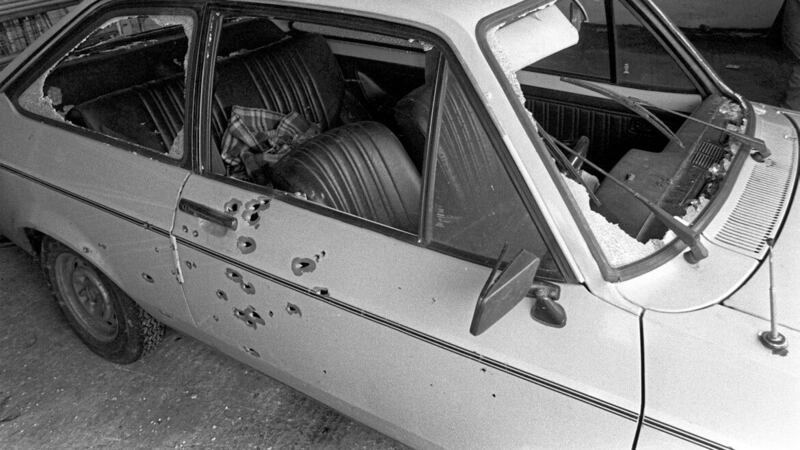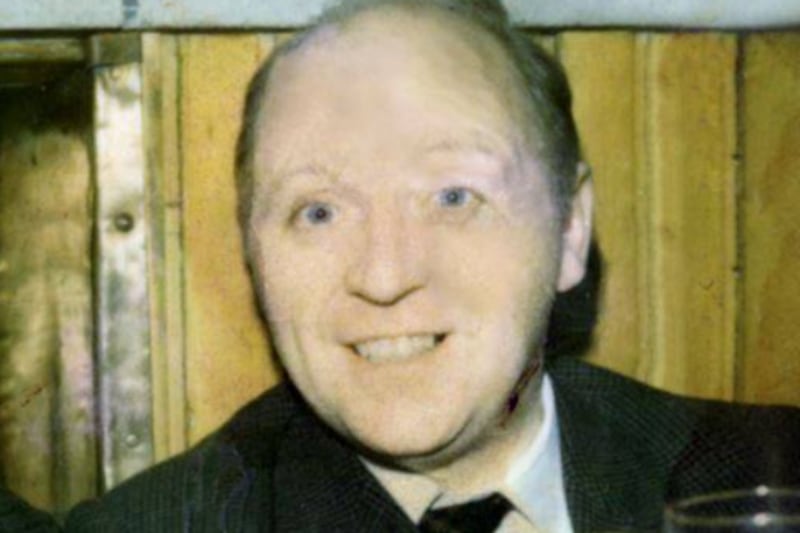Inquests into the deaths of 11 people during the Troubles have all but ended prematurely with the introduction of the British government’s Legacy Act.
Coroners siting in three inquests delivered their findings to relatives on Monday.
The latest blow to truth recovery comes as the curtain is set to fall on long-standing legal mechanisms for investigating the past.
From May 1 all civil cases and inquests that are not at their findings will be halted as part of the Legacy Act.
From Wednesday all legacy cases will be transferred to the Independent Commission for Reconciliation and Information Recovery (ICRIR).
Many victims and relatives of those who died during the Troubles are strongly opposed to the ICRIR and believe it is designed to protect state participants from accountability.
In recent weeks several high-profile inquests linked to allegations of collusion have been halted by coroners amid concerns over a failure by state bodies to disclose key information.
Legacy inquests are generally the subject of applications by state bodies for redactions to sensitive documents under Public Interest Immunity (PII).
PII certificates are used by state agencies to withhold information they do not want members of the public to see.
In recent weeks Secretary of State Chris Heaton-Harris has launched legal action in several cases over decisions by coroners to provide gists, or limited summaries, of sensitive information at inquests.
On Monday a coroner in the inquest of nine people killed in the 1980′s said the legal process was “not viable”.

Known as the Stalker/Sampson series, the inquest considered the RUC shooting of unarmed republicans Gervais McKerr (31), Eugene Toman (21) and Sean Burns (21) near Lurgan in Co Armagh on November 11, 1982.
Their killings were the first of six operations carried out by the same RUC unit in north Armagh over a five-week period four decades ago.
The shootings were investigated by the deputy chief constable of Greater Manchester Police John Stalker.
The killing of Catholic teenager Michael Tighe (17) at a hay shed near Craigavon was also under examination.
Weeks later on December 12, INLA members Seamus Grew (30) and Roddy Carroll (21), who were also unarmed, were shot dead at Killylea Road, outside Armagh.
Toman and Burns were suspected of being involved in an IRA bomb attack at Kinnego Embankment, near Lurgan, that claimed the lives of three RUC officers, Sean Quinn (37), Paul Hamilton (26) and Allan McCloy (34), on October 27, 1982.
The attack on the three officers is also being investigated by Operation Kenova.
In a provisional ruling, coroner John O’Hara, who is also High Court judge, said he was unable to complete the PII process in all the cases adding that his “provisional view is that these inquests cannot adequately investigate the deaths where such disclosure is withheld”.
Outside court Fearghál Shiels of Madden and Finucane Solicitors said: “We do not accept that the coroner is in a position to lawfully determine that an inquest into the deaths of Gervaise McKerr, Eugene Toman and Sean Burns is not viable as the coroner has not yet conducted any examination of the sensitive materials which underpin the incident relating to those deaths.
“The coroner has considered only the sensitive materials relating to the explosion at Kinnego.
“To decide that inquests cannot proceed for this reason is premature and speculative, and may be subject to a legal challenge.”

An inquest into the death of Sam Marshall (31), who was shot by two masked UVF men seconds after leaving Lurgan RUC station after signing bail on March 7, 1990, has also been stopped.
His brother-in-law Tony McCaughey and prominent Lurgan republican Colin Duffy were with him at the time but escaped injury.
Collusion is suspected in the case.
Coroner Philip Gilpin said it was clear from inquest papers that the three men were under British army surveillance and were followed by two soldiers on foot when they left the police station.
Upholding PII applications by state agencies, he added that he cannot hold “an adequate inquest into the death” of Mr Marshall but said he will be writing to the Secretary of State inviting him to consider a public inquiry.
Mr Marshall’s brother, John Marshall, said the “development comes as no surprise” to his family.
“We recently received so-called sensitive disclosure which makes clear that when our brother Sam first appeared in Court in January 1990 seeking bail for low level possession of ammunition charges that an undercover soldier and a special branch officer appeared in the same court to familiarise themselves with Sam’s physical appearance,” he said.
“For the next two months, Sam was followed twice weekly to and from Lurgan police station in order to sign bail whilst under intense surveillance from undercover soldiers.”
Mr Marshall said eleven undercover British soldiers were operating in a area around Lurgan RUC station when he was killed.
“Two armed loyalist gunmen were allowed to easily infiltrate the area patrolled by heavily armed soldiers and shoot Sam dead and make good their getaway,” he said.
“The guns used to murder Sam were imported into Ireland by loyalist gun runners who were also paid British agents.
“Anyone with any knowledge of this case will know why the British Government will want to stop this case in its tracks, because it stinks of collusion from the high heavens and it demands the explanations that the government has fought hard for the last 34 years to hide.”

Another inquest halted on Monday was that of Seamus Dillon (45), a former republican prisoner. He was shot dead by the LVF as he worked on the door at the Glengannon Hotel, near Dungannon, in December 1997.
Mr Dillon’s widow is currently a lead case in a High Court challenge against the Legacy Act.
It emerged during the hearing that the PII process had not been completed and Coroner Richard Greene said it was his provisional view that it is not now possible to hold an inquest.
He also placed on record that it was a “very great personal and professional disappointment” that he was unable to complete the inquest” and described the death of Mr Dillon as “brutal and wholly unnecessary murder of a wholly innocent man”.
After the hearing Ms Dillon said she felt “a bit deflated”
“I’ll fight until I get the answers, until I get the truth and justice that my husband is entitled to,” she added.
Speaking outside court her solicitor Gavin Booth, of Phoenix Law, said his client does not believe the ICRIR “can be capable of discharging the obligations.
“The only option now is a public inquiry, given it’s the same suspects, ballistics and murder gang,” he said.
“As a matter of course if there’s an inquiry in one there should be an inquiry in Dillon.”








